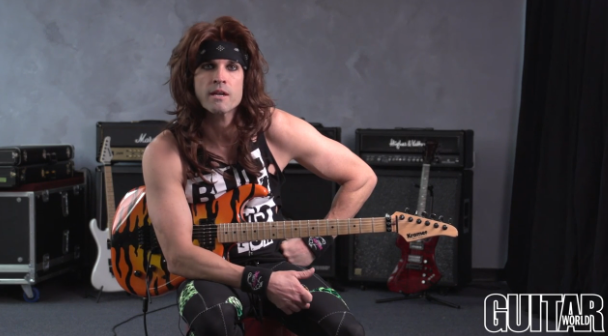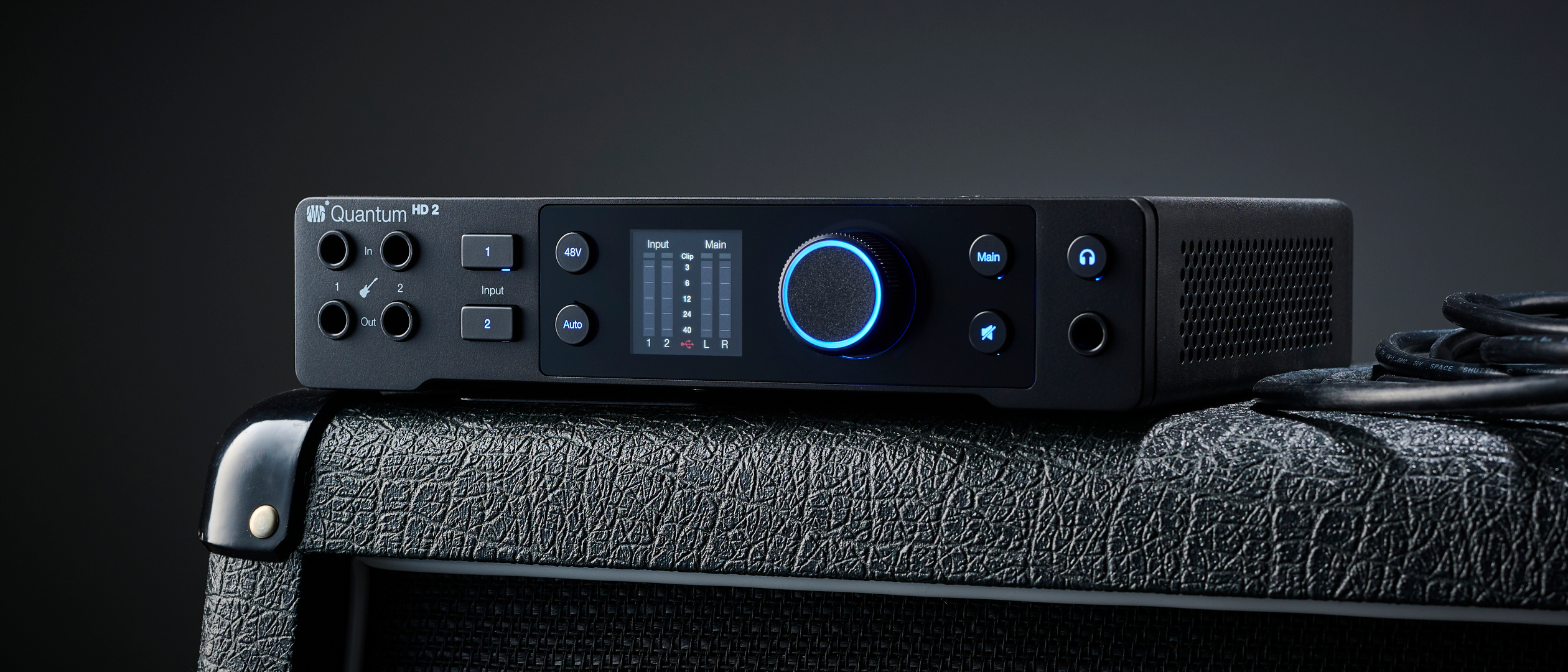Man of Steel with Steel Panther's Satchel: Using Classical-Style Arpeggios, and How to Play the Solo in “Weenie Ride” — Video

This month I’d like to tell you about a Steel Panther song called “Weenie Ride,” from our multi-maxi-selling 2012 album, Balls Out.
“Weenie Ride” was our very first piano ballad. Our first album, Feel the Steel, was a huge hit in Asian countries, and everyone knows that they love piano over there, so we decided to include a piano ballad on our next record. Pretty smart, right?
Also, when I go to Disneyland I usually see a lot of Asians, and there are a lot of rides at Disneyland, most of them with long lines. So I put two and two together and wrote “Weenie Ride,” which, by the way, has a much shorter line! Just jump right on!
“Weenie Ride” is built around a piano part in the key of A minor. There is, of course, a bitchin’ guitar solo in the song, which I am going to show you in this column. A note about the guitar tuning: I always tune down one half step, like Eddie Van Halen. But when we recorded “Weenie Ride,” I played the solo on a standard-tuned guitar. When we perform the song live, however, I play in on a guitar tuned down one half step and just move everything up one fret, as if I were playing in the key of Bb minor, which results in all of the fretboard “dots” being in the wrong place. It took a while to get used to doing that, and I considered moving the dots on the fretboard up one fret, but that seemed like too much trouble.
Let me first show you the piano accompaniment played behind the solo, arranged for a guitar tuned down one half step and played as if it were in the key of Bb minor (see FIGURE 1). The part is based mostly on a repeating two-bar progression of Bbm, Ab, Gb and F, two beats on each chord. This figure is played three times and is followed by Bbm, Ab/C, Db, Eb, E, and then B/E, which ushers in a modulation to a different key.
FIGURE 2 illustrates the eight-bar guitar solo. The licks in bars 1 and 2 are based on the Bb harmonic minor scale (Bb C Db Eb F Gb A); in bar 2, the A note comes in handy because, when played over the F chord, it functions as the major third. Likewise, the Eb functions as the flat seven (b7), which sounds very Yngwie-esque and Bach-like.
Bar 3 utilizes a “pivot”-type line, as descending notes alternate with a high F pedal tone, another Bach/Yngwie convention. In bars 5 and 6, I switch to standard descending and ascending arpeggios that outline each chord in the progression across the top four strings; in this way, the solo offers a great way to study classical-style arpeggios. In bar 8, I bridge the gap between minor and major by bending up to the relative major of Bb minor, Db, from a half step below and then shift to a descending Eb major arpeggio-based run, ending the solo on B, the fifth of E, the first chord of the next section, which as I mentioned earlier modulates to a different key.
Get The Pick Newsletter
All the latest guitar news, interviews, lessons, reviews, deals and more, direct to your inbox!
